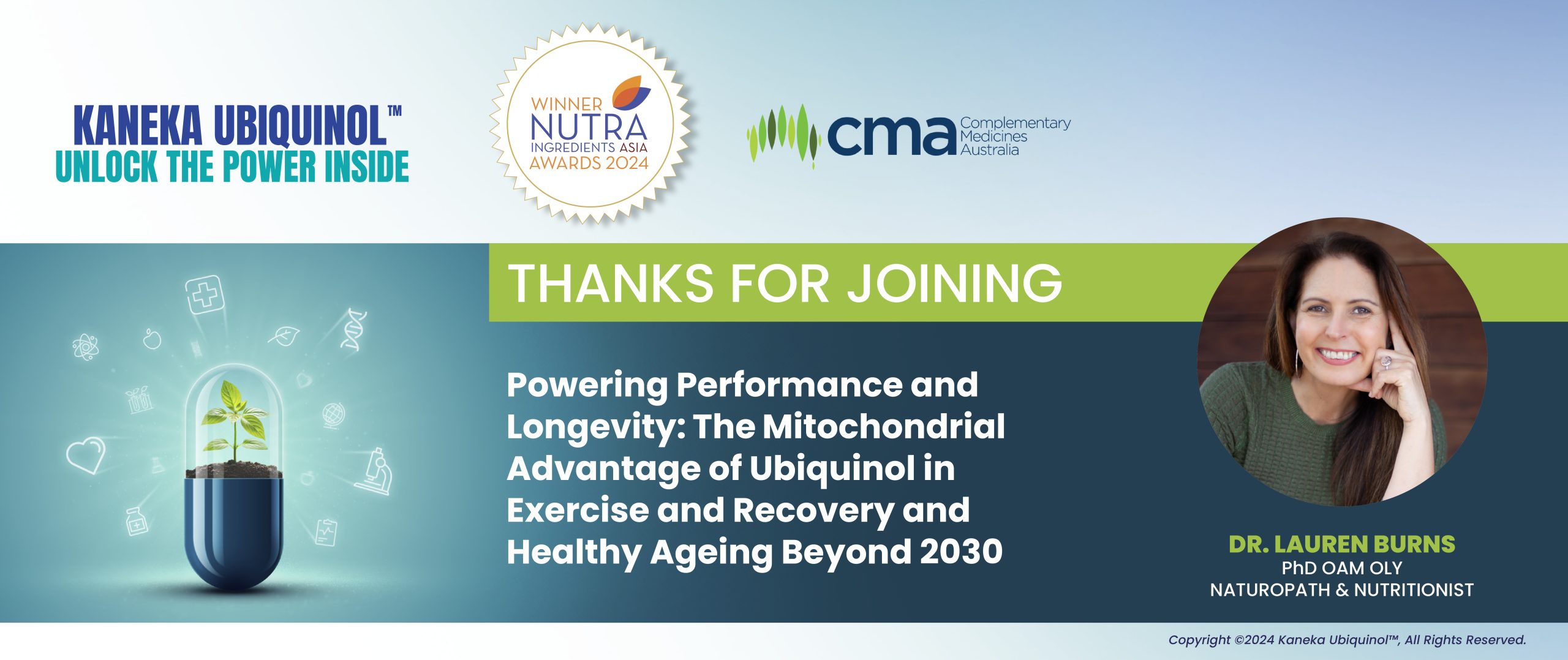
Most Frequently Asked Infertility Questions Answered
Jul 2021Recent Article
What is infertility?
Infertility is defined as 1 year of unwanted non-conception with unprotected intercourse in the fertile phase of menstrual cycles [1]. According to the Fertility Society of Australia and New Zealand, one in six couples in Australia experience infertility [2].
What causes infertility?
There are a number of causes of infertility in both men and women. For women, hormonal imbalances caused by rapid weight loss or gain, being underweight or overweight, medication and stress can affect fertility levels [3]. Damaged fallopian tubes, due to infection, blockages, or endometriosis, can also contribute to infertility [4]. On the other hand, men may experience infertility as a result of disturbances to sperm mutation which affects the quality of a male’s sperm. Factors such as tobacco use, varicose veins in the testicles, stress and even environmental pollution can affect the quality of male sperm [5].
How is infertility diagnosed?
In women, infertility is often diagnosed by conducting blood tests, ultrasounds, and testing of the fallopian tubes and uterus [6]. On the other hand, men are diagnosed through the process of semen analysis. Whereas for men, a semen analysis measures the number of sperm, its ability to move, as well as the size and shape of the sperm [7]. Generally speaking, a normal result from a semen analysis will show a sperm count of at least 15 million sperm per mL [8].
How is infertility treated?
There are a number of ways in which infertility can be evaluated and treated in both men and women. When infertility is detected in males, a referral to a male fertility specialist or reproductive endocrinologist is necessary [9] A specialist will evaluate cause and treatment options on a case by case basis as each person’s lifestyle choices and situation is different. [10]. As research and technology has progressed, the number of treatment options for women have increased over the past number of years ranging from ovulation induction (hormone treatment), IVF (in-vitro fertilisation) treatment, which involves the fertilisation of eggs outside of the body. [11] However, and most essentially, a healthy diet and the correct combination of supplements are important, to support any treatment with the aim to conceive
Ubiquinol’s role in supporting fertility
Ubiquinol is the active form of Coenzyme-Q10 (CoQ10). It is a fat-soluble antioxidant found naturally in the body that is important for supporting heart health, [12]cellular energy production, [13] relieving oxidative stress, [14] supporting fertility [15] and supporting overall health and wellbeing.
Ubiquinol supports cellular energy production by assisting the synthesis of ATP in the mitochondria. Optimal levels of Ubiquinol support optimal mitochondrial health. [16] Research indicates that mitochondrial energy may influence female fertility. Mitochondrial function and dysfunction have been the subject of various studies in ovarian ageing and metabolic stress. [17]
Thus, women who are struggling with fertility issues may want to support mitochondrial health by including nutrients to their lifestyle that may help support mitochondrial energy through ATP (adenosine triphosphate) production. [18]
As well, a study investigated the effects of the administration of ubiquinol (a reduced form of coenzyme Q10) on semen parameters and seminal plasma antioxidant capacity in infertile men with idiopathic oligoasthenoteratozoospermia (the term for low sperm count, poor motility and abnormal shape). In the study, 228 men with unexplained infertility were randomly assigned 1:1 into 2 groups, group 1 (114) received 200 mg ubiquinol daily by mouth for 26 weeks and group 2 (114) received a similar regimen of placebo. The study found that Ubiquinol was significantly effective in men with unexplained oligoasthenoteratozoospermia for improving sperm density, sperm motility and sperm morphology. [19]
[1] Gnoth, C., Godehardt, E., Frank-Herrmann, P., Friol, K., Tigges, J. and Freundl, G., 2021. Definition and prevalence of subfertility and infertility.
[2] Fertility Society of Australia and New Zealand (2021) Homepage. Available at: <https://www.fertilitysociety.com.au/> (Accessed: 12 July 2021).
[3] Kinderwunsch Zentrum (2021) Causes for male and female infertility. Available at: <https://www.kinderwunschzentrum-ludwigsburg.de/en/your-way-to-your-desired-child/causes-for-male-and-female-infertility.html> (Accessed: 12 July 2021).
[4] Kinderwunsch Zentrum (2021) Causes for male and female infertility. Available at: <https://www.kinderwunschzentrum-ludwigsburg.de/en/your-way-to-your-desired-child/causes-for-male-and-female-infertility.html> (Accessed: 12 July 2021).
[5] Kinderwunsch Zentrum (2021) Causes for male and female infertility. Available at: <https://www.kinderwunschzentrum-ludwigsburg.de/en/your-way-to-your-desired-child/causes-for-male-and-female-infertility.html> (Accessed: 12 July 2021).
[6] IVF Australia (2021) What is infertility? Available at: <https://www.ivf.com.au/planning-for-pregnancy/what-is-infertility> (Accessed: 12 July 2021).
[7] IVF Australia (2021) Semen Analysis. Available at: <https://www.ivf.com.au/planning-for-pregnancy/male-fertility/semen-analysis> (Accessed: 12 July 2021).
[8] IVF Australia (2021) Semen Analysis. Available at: <https://www.ivf.com.au/planning-for-pregnancy/male-fertility/semen-analysis> (Accessed: 12 July 2021).
[9] Lindsay, T. J., & Vitrikas, K. R. (2015). Evaluation and treatment of infertility. American family physician, 91(5), p.308–314.
[10] Lindsay, T. J., & Vitrikas, K. R. (2015). Evaluation and treatment of infertility. American family physician, 91(5), p.308–314.
[12] Bates, A., Shen, Q., Hiebert, J., Thimmesch, A. and Pierce, J., 2014. Myocardial energetics and ubiquinol in diastolic heart failure. Nursing & Health Sciences, 16(4), pp.428-433.
[11] Better Health Channel (2021) Assisted reproductive technology – IVF and ICSI. Available at: <https://www.betterhealth.vic.gov.au/health/conditionsandtreatments/Assisted-reproductive-technology-IVF-and-ICSI> (Accessed: 12 July 2021).
[13] Alf, D., Schmidt, M. and Siebrecht, S., 2013. Ubiquinol supplementation enhances peak power production in trained athletes: a double-blind, placebo controlled study. Journal of the International Society of Sports Nutrition, 10(1), p.24.
[14] Sarmiento, A., Diaz-Castro, J., Pulido-Moran, M., Moreno-Fernandez, J., Kajarabille, N., Chirosa, I., Guisado, I., Javier Chirosa, L., Guisado, R. and Ochoa, J., 2016. Short-term ubiquinol supplementation reduces oxidative stress associated with strenuous exercise in healthy adults: A randomized trial. BioFactors, 42(6), pp.612-622.
[15] Safarinejad, M., Safarinejad, S., Shafiei, N. and Safarinejad, S., 2012. Effects of the Reduced Form of Coenzyme Q 10 (Ubiquinol) on Semen Parameters in Men with Idiopathic Infertility: a Double-Blind, Placebo Controlled, Randomized Study. Journal of Urology, 188(2), pp.526-531
[16] Neergheen, V., Chalasani, A., Wainwright, L., Yubero, D., Montero, R., Artuch, R. and Hargreaves, I., 2017. Coenzyme Q10 in the Treatment of Mitochondrial Disease. Journal of Inborn Errors of Metabolism and Screening, 5, p.232640981770777.
[17] Cecchino, G., Seli, E., Alves da Motta, E. and García-Velasco, J., 2018. The role of mitochondrial activity in female fertility and assisted reproductive technologies: overview and current insights. Reproductive BioMedicine Online, 36(6), pp.686-697.
[18] Xu, Y., Nisenblat, V., Lu, C., Li, R., Qiao, J., Zhen, X. and Wang, S., 2018. Pretreatment with coenzyme Q10 improves ovarian response and embryo quality in low-prognosis young women with decreased ovarian reserve: a randomized controlled trial. Reproductive Biology and Endocrinology, 16(1).
[19] Safarinejad, M., Safarinejad, S., Shafiei, N. and Safarinejad, S., 2012. Effects of the Reduced Form of Coenzyme Q 10 (Ubiquinol) on Semen Parameters in Men with Idiopathic Infertility: a Double-Blind, Placebo Controlled, Randomized Study. Journal of Urology, 188(2), pp.526-531.
You can share this by:
Keep up-to-date with Ubiquinol News
Ubiquinol Headlines

Retail Pharmacy: Healthy Ageing in the Spotlight
Apr 2025Category: Ageing, Antioxidants, APP, Conference, Conferences, Endurance, Health, Health Industry, healthy ageing, Immunity, In The News, Mitochondrial health, Nutrition, Online, Stress, Ubiquinol, Vitamins, wellnessRead More
Retail Pharmacy: The Impact of Loneliness on Heart Health
Apr 2025Category: cardiovascular health, dr ross walker, Heart, In The News, Mitochondrial health, Online, UbiquinolRead More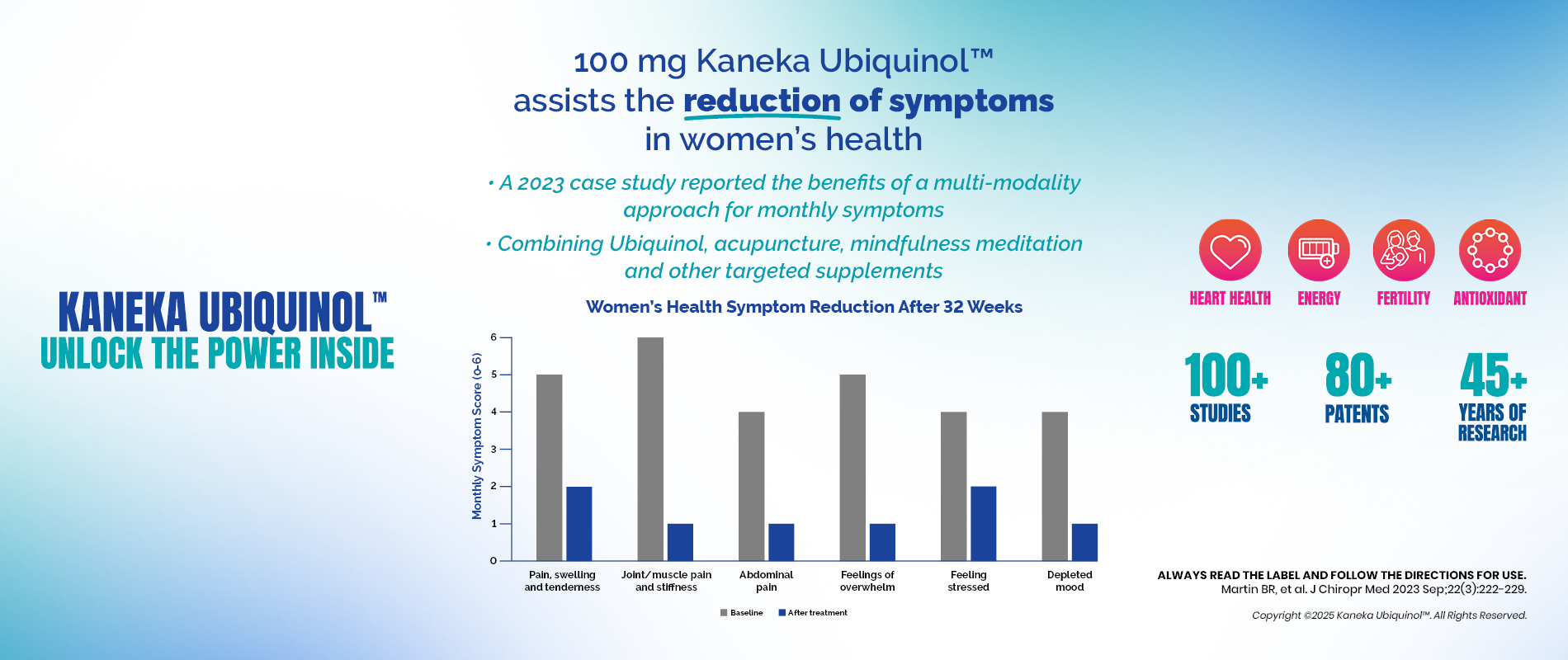
Ubiquinol for Women’s Health
Apr 2025Category: Ageing, Antioxidants, Fertility, Kaneka, Mitochondrial health, Ubiquinol, wellness, Women's HealthRead More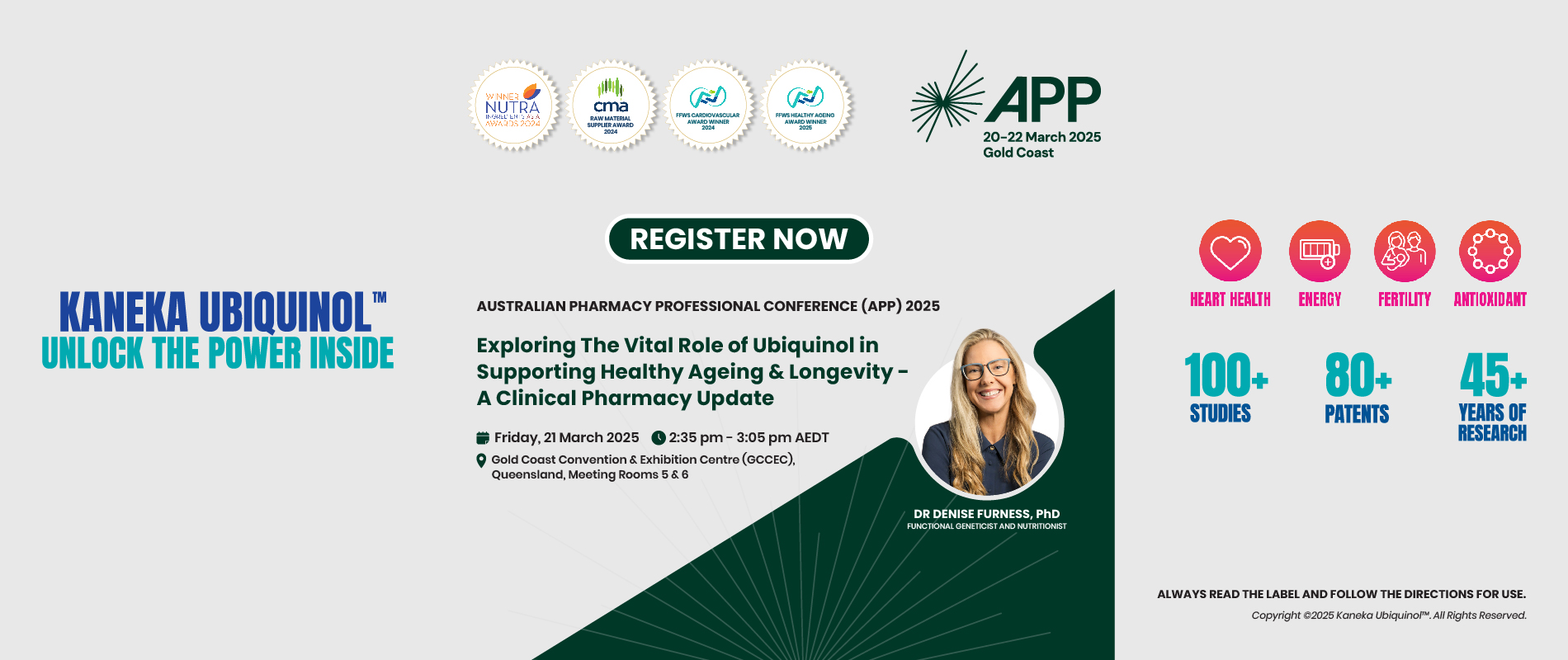
Kaneka Ubiquinol™ at APP 2025: Advancing Healthy Ageing & Longevity
Mar 2025Category: Ageing, Antioxidants, APP, Conference, Conferences, Energy, Fatigue, Health, Health Industry, healthy ageing, Kaneka, Mitochondrial health, Nutrition, UbiquinolRead More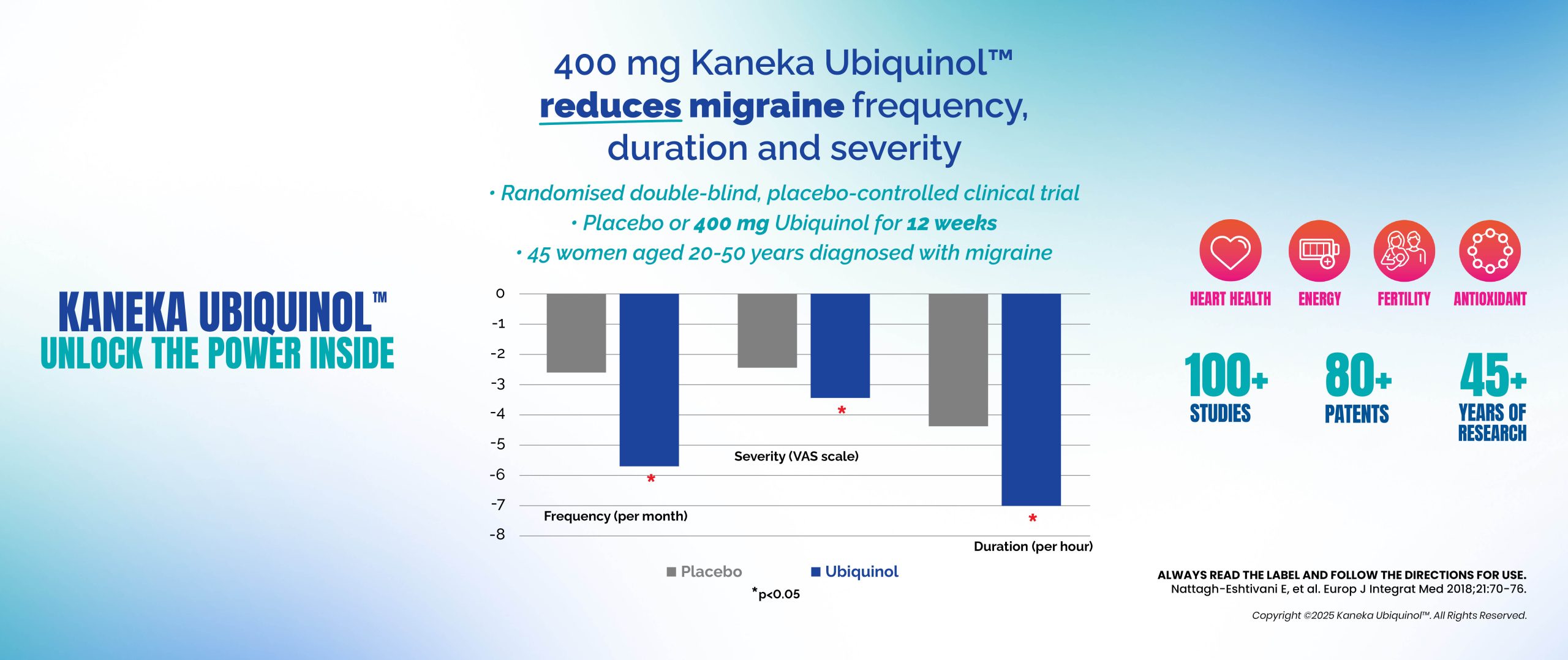
Ubiquinol: Supporting Migraine Relief Through Cellular Energy
Jan 2025Category: Antioxidants, complementary medicine, Energy, Fatigue, Health, Health Industry, healthy ageing, Kaneka, Mitochondrial health, Nutrition, Stress, Ubiquinol, Vitamins, wellnessRead More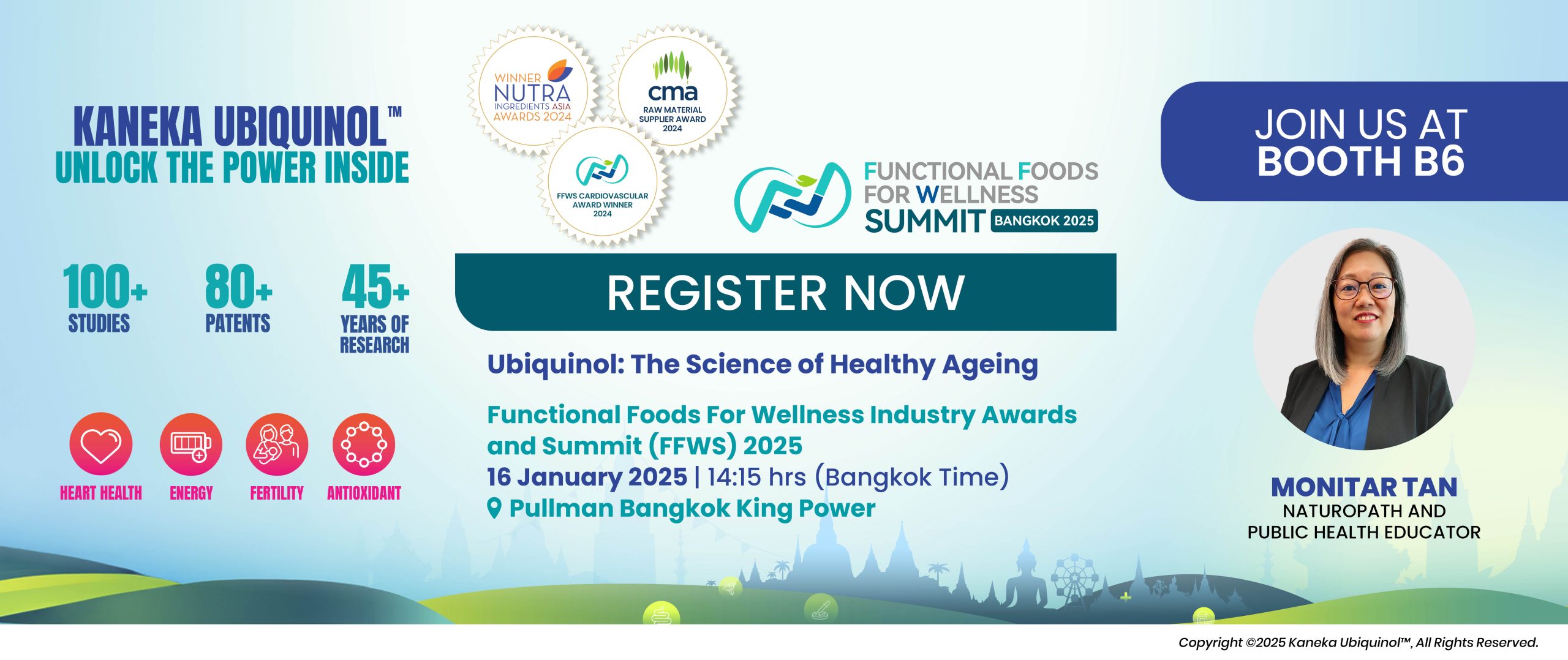
Kaneka Ubiquinol™ at Functional Foods for Wellness Industry Awards and Summit, #FFWS2025
Jan 2025Category: Ageing, Antioxidants, Awards, cardiovascular health, Conference, Conferences, Energy, Fatigue, FFWS2025, Health, Health Industry, healthy ageing, Kaneka, Menopause, Mitochondrial health, Nutrition, Ubiquinol, VitaminsRead More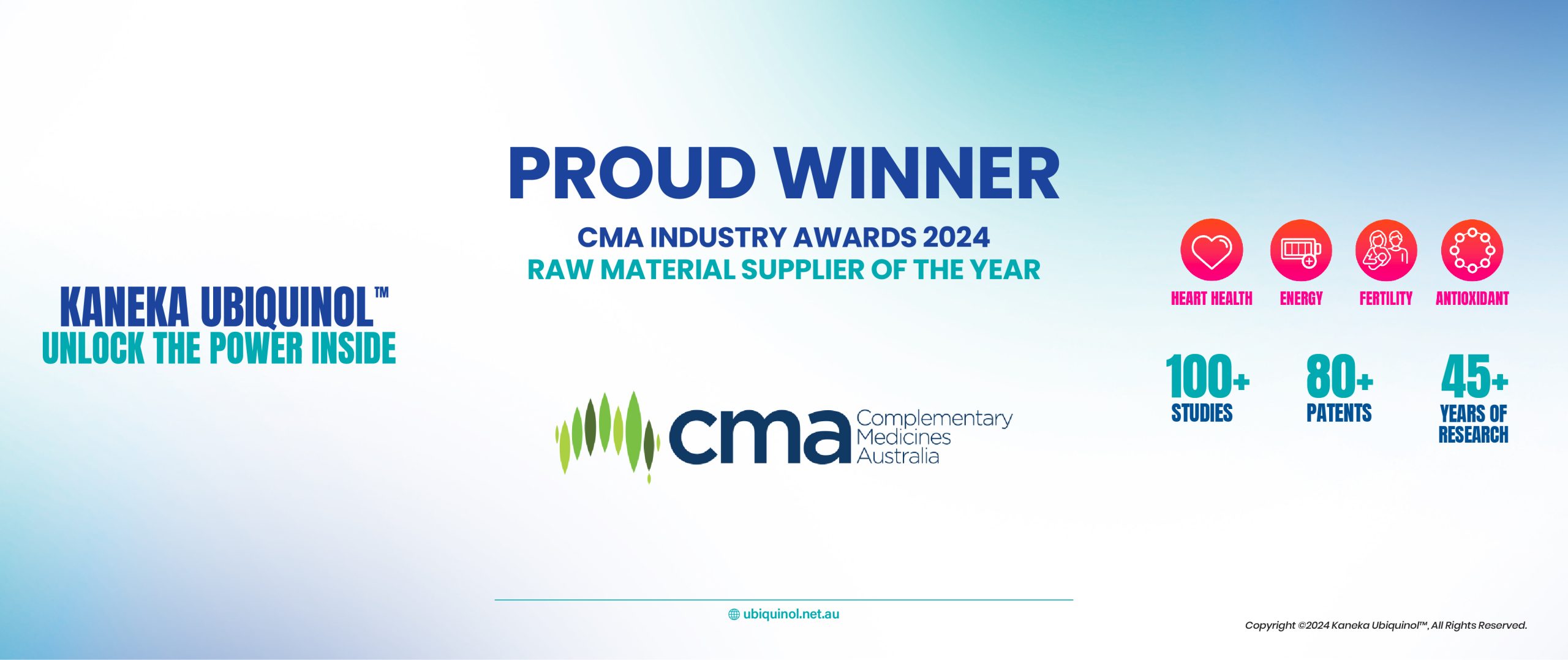
Kaneka Ubiquinol Wins Prestigious Complementary Medicines Raw Material Supplier of the Year Award 2024
Dec 2024Category: Ageing, Awards, cardiovascular health, complementary medicine, Conference, Conferences, Endurance, Energy, Fatigue, Fertility, Fitness, Health, Health Industry, healthy ageing, Heart, Immunity, In The News, Kaneka, Lungs, Memory, Mitochondrial health, Nutrition, Online, Stress, Ubiquinol, Vitamins, wellnessRead More